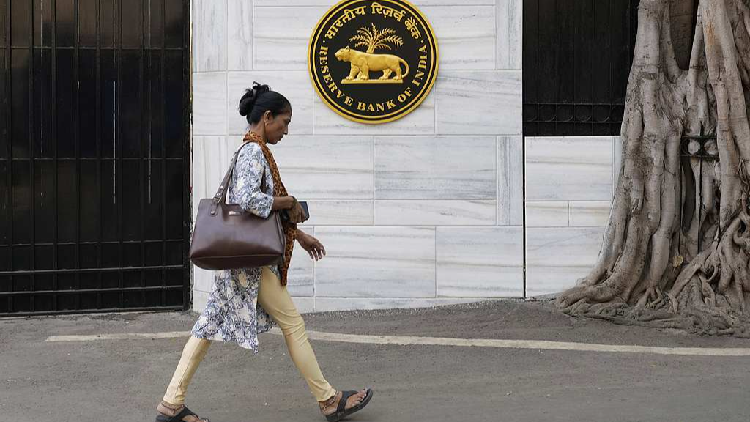India's RBI declares initial rate reduction since 2020 due to decelerating growth
India's central bank revealed on Friday a 25 basis point reduction in its key lending rate in an effort to stimulate economic growth. This move by the Reserve Bank of India's monetary policy committee marks the first rate cut since May 2020, adjusting the policy repo rate from 6.5 percent to 6.25 percent.

During the scheduled bimonthly review, the RBI maintained a "neutral" monetary policy stance in light of disappointing GDP growth, which stood at 5.4 percent for the July-September 2024 quarter. This comes as the market anticipates the October-December GDP figures to be released later in the month.
In a statement post-review, newly appointed RBI Governor Sanjay Malhotra remarked that the current growth-inflation dynamics have created a policy space for the central bank to enhance growth support.
He noted that while growth is projected to rebound from the previous quarter's low, it lags significantly behind the 8.2 percent growth rate from the previous fiscal year of 2023-2024.
"Excessive volatility in global financial markets and continued uncertainties about global trade policies coupled with adverse weather events pose risks to the growth and inflation outlook," Malhotra stated.
Maintaining a growth estimate of 6.4 percent for the current year, Malhotra indicated that the RBI projects real GDP growth for the following year to be at 6.7 percent. Headline inflation currently stands at 5.2 percent, with inflation for the financial year 2025-26 forecasted at 4.2 percent.
The RBI governor expressed optimism about a recovery in the manufacturing sector and urban demand—factors previously linked to a slowdown—and pointed to a significant income tax relief proposed by the Indian government in last week's annual budget as a favorable development for growth.
Numerous banks have expressed that the rate cut is a valid decision.
"Given the long and variable lags, the rate reduction avoids the risk of falling further behind the curve and buys some growth insurance in hugely uncertain and volatile global environment," stated Sakshi Gupta, principal economist at HDFC Bank, according to Reuters.
Upasna Bhardwaj, chief economist at Kotak Mahindra Bank, described the RBI's action as anticipated.
"The softening growth and inflation outlook has provided room to monetary easing. The RBI will need to monitor liquidity conditions more closely to ensure liquidity stance remains in sync with the policy stance," Bhardwaj commented.
The markets reacted indifferently to the policy announcement, as they had already anticipated the decision. Nonetheless, India’s benchmark indexes, Sensex and Nifty, were both slightly down at close, with bank stocks remaining subdued since the RBI’s announcement did not include liquidity easing measures. The Bank Nifty index was trading down 0.44 percent at close.
The first two weeks of February are critical for India's growth trajectory, as they encompass the union budget and RBI policy review, followed by two significant political events likely to have economic implications. The first involves the results of the recent elections in Delhi, where the NDA coalition aims to gain power by ousting the regional incumbent.
Notably, Prime Minister Narendra Modi's Bharatiya Janata Party has not governed Delhi for the past 27 years, which spans both of his complete terms thus far.
After the results are announced on Saturday, Modi is scheduled to visit Washington, DC, to meet with US President Donald Trump at the White House, with New Delhi seeking to align itself with Trump's tariff policies.
Allen M Lee for TROIB News
Find more stories on Business, Economy and Finance in TROIB business












